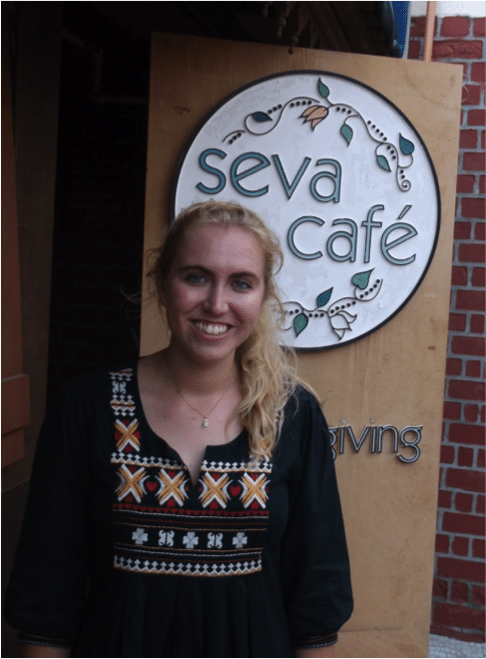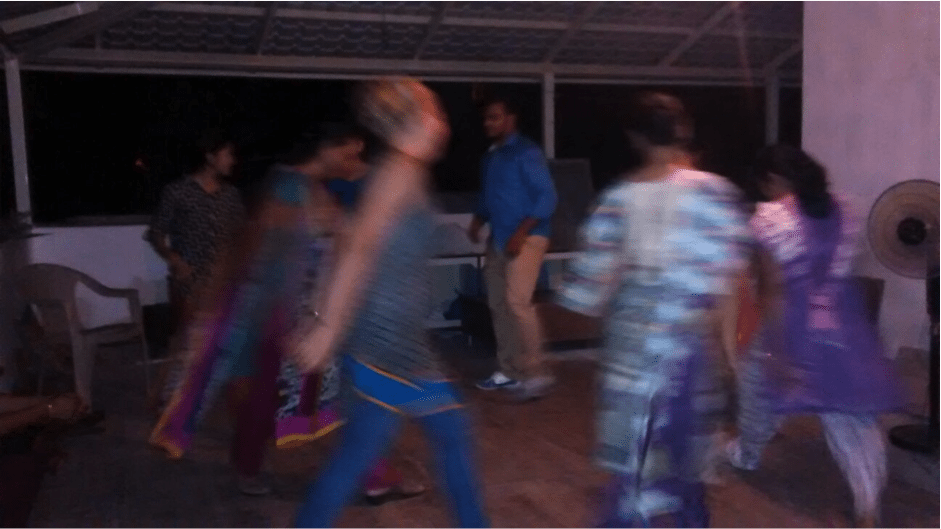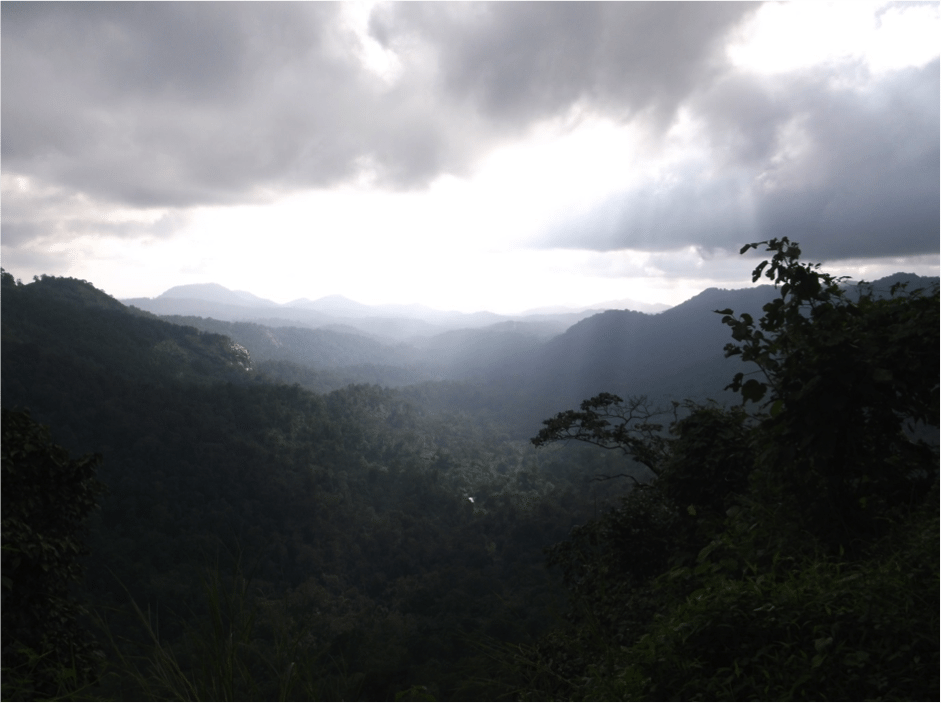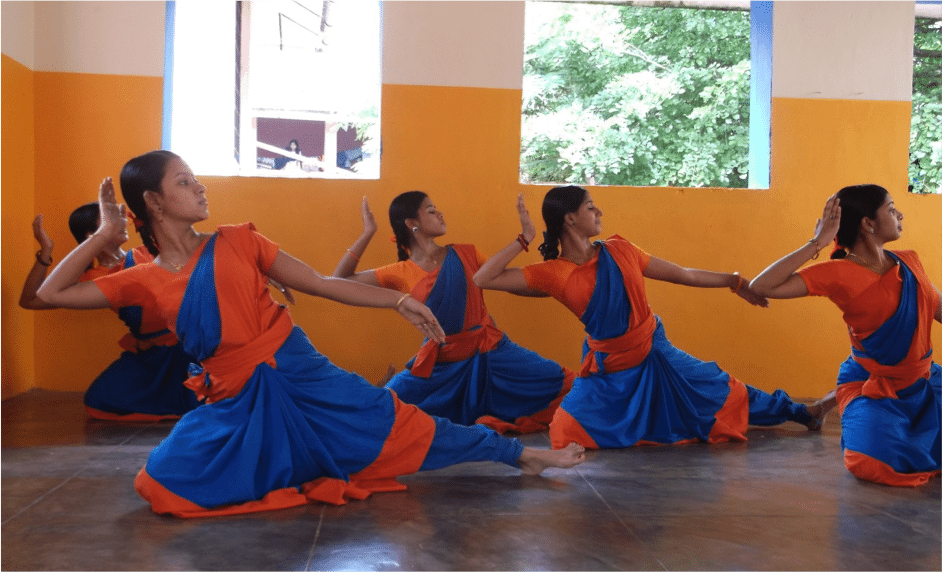Special Series: Indian Festival Costumes Issue 2, “On the Move”
Emma Hollows is a student from Manchester, England, going into her final year at the University of Cambridge. From August 7th to September 24th she is spending 7 weeks of her summer vacation in India exploring Gujarat and Kerala to investigate the costumes and make-up of Indian celebrations. During her trip, Emma is writing a blog series for Performing Arts Abroad as she participates in various festivals and attends Kerala Kalamandalam, a performing arts university teaching students the music, dances, costumes and make-up used in festivals. This is the second issue of this special series…
Since my last post I celebrated Krishna Janmashtami in Ahmedabad with the extended family, so I met a whole horde of new people once again! Before long we had got onto the subject of dance and a space was cleared for me to teach some ballet, an art form rarely studied in India. Most will study a form of classical Indian dance but many have also learned some hip-hop thanks to the influence of Hollywood and Bollywood. After running through the basics of ballet, my lesson in Gujarati garba dancing began. The main festival in Gujarat is Navratri which consists of nine nights of dancing the garba. On a balcony, surrounded by palm trees, family and food, we circled the repetitive steps all evening, clapping and stamping the beat.
 Through my work with Vishvet, I volunteered at the Seva Café in Ahmedabad. Despite its simplicity, this evening was probably one of my most enjoyable so far. I felt in my element mucking in as part of the team of volunteers who became instant friends as we shared experiences, chatted with guests, and later all sat down to a well-deserved dinner. The ethos of the café is to give from the heart so guests leave a donation rather than paying a bill making it the perfect destination for those who would otherwise go hungry. There is also a donation box by the entrance intended to be used by anyone who wishes to do something for the local community. Chatting to one particular guest, I discovered that he is a theatre director, writer and actor; still performing and holding workshops despite being in his 70s. This led to a visit to his home the following day to see his work. He had so many wonderful stories from his career in theatre and gave me his copy of Bhavai so that I may learn more of the Gujarati folk theatre.
Through my work with Vishvet, I volunteered at the Seva Café in Ahmedabad. Despite its simplicity, this evening was probably one of my most enjoyable so far. I felt in my element mucking in as part of the team of volunteers who became instant friends as we shared experiences, chatted with guests, and later all sat down to a well-deserved dinner. The ethos of the café is to give from the heart so guests leave a donation rather than paying a bill making it the perfect destination for those who would otherwise go hungry. There is also a donation box by the entrance intended to be used by anyone who wishes to do something for the local community. Chatting to one particular guest, I discovered that he is a theatre director, writer and actor; still performing and holding workshops despite being in his 70s. This led to a visit to his home the following day to see his work. He had so many wonderful stories from his career in theatre and gave me his copy of Bhavai so that I may learn more of the Gujarati folk theatre.
Now I am in God’s own country: Kerala. Spending 32 hours on a train in England would kill me but here it was actually one of my favourite experiences. Perched on a third tier bunk, I had my own space above the bustle of passengers and retailers below. I soon got used to the shouts of chai chai chai as a man stumbled along with a large vat of tea. Travelling nearly 2000km, I met people from all over India. My favourite thing by far was to sit by the open door of the train and watch as the scenery changed from crowded cities to vast rivers weaving their way through dense jungle. Lots of people sat with me over the hours, all very friendly and always interested to hear about England.
Since arriving in Kerala I have been fortunate enough to have a wonderful guide in the owner of my hostel who has taken me to temples, waterfalls and a tea plantation. Even in the centre of Thrissur there is so much greenery with a large park and temple situated on the city’s famous ‘round’. My daily commute on the bus to Kerala Kalamandalam passes jungle, rivers and paddy fields – slightly different from the bus rides in Manchester!
At Kalamandalam I have begun shadowing a student of Mohiniyattam, the traditional Keralan dance for women, also known as the Dance of the Enchantress. The slow subtle movements and the droning music make the dance almost hypnotic. It is so different from the Western dance I have previously been exposed to that it is delightful to see how every part of the body is considered. Particular importance is granted to hand gestures and eye movements which together form an entire vocabulary of different emotions. Indian dancers are great storytellers, conveying the meaning of the songs through their actions and emotions. I am learning more about the costume of Kathakali and Mohiniyattem over the coming days so I will tell you guys all about it in my next post!
For now, tata!
Written by Emma Hollows
Performing Arts Abroad guest blogger and costume designer



